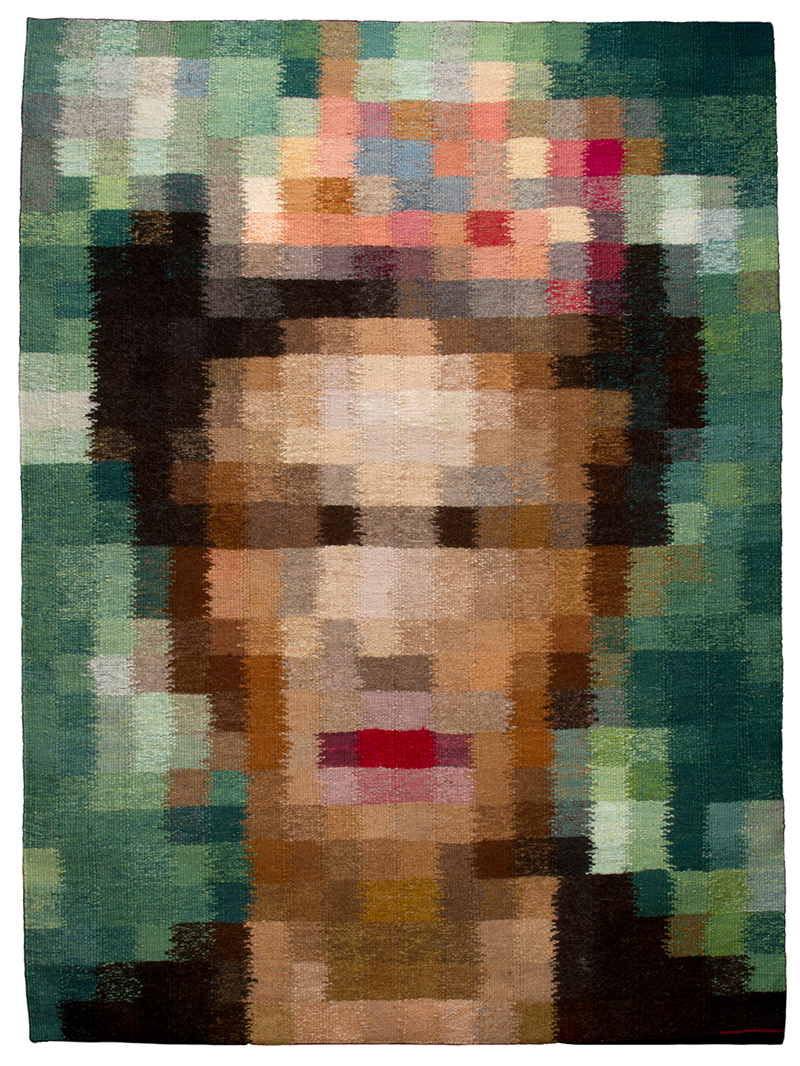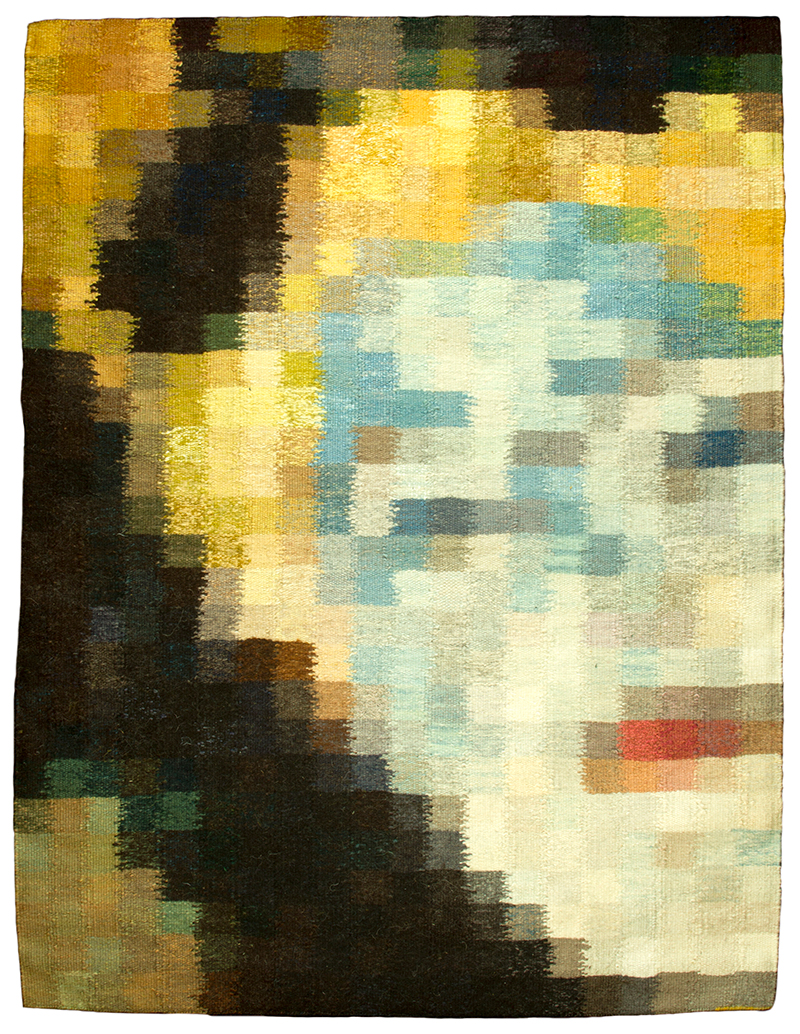


Pixels:
Synopses: handwoven tapestry faces by Michale F. Rohde
February 8 - June 29, 2025
Lobby Gallery
Pixels is a two-person exhibition featuring textile artist Michael F. Rohde and painter Michael Azgour
Concept:
Handwoven tapestry has often been pushed to the limits of the medium's capabilities, to approach photorealism. My approach is to recognize the grid imposed by the loom. For me, this leads to an examination of the minimum bits of information that can suggest a recognizable image. For this group of tapestries, I have used photos of faces, some recognizable, and some not, and reduced the image to 20 pixels wide. This produces the weaving plan, from which I again approximate the colors for each pixel and weave, row by row a set of squares, to generate an abstracted face.
The choices of which faces to use fall into three broad, but interrelated categories: One, individuals who in thought and practice have served as role models who we might wish all could emulate. Two, some recognizable images from the world of artistic expression. Three, painted faces of tribal icons. And, one self-portrait.
Process:
These woven images are informed by both digital and hand technologies. Photographs of faces are worked in Photoshop, to crop an image to the face only, then to reduce the number of pixels to a width of twenty pixels. An 8.5x11 inch print of this highly pixelated face is then used as the guide to hand-weaving the tapestry.
To have the range of colors that I need, I dye all yarns used and aim to achieve a close match to the colors of the original face. In some cases, the original photo was either black and white, or sepia-toned; in these cases, an assortment of un-dyed alpaca yarns are used, in the tonal ranges needed.
The process of reducing the image to a small number of squares, as well as working with approximations of the colors, yields a portrait that sits on that tenuous edge between abstraction and representation. However, what amazes me is how little visual information is
needed to trigger recognition.
Most often, when viewers are confronted with the physical tapestry, it does not immediately register as a face, unless they are far enough away, or view it via their cell phone, to take a picture. Thus the circle goes around from technology, to handwork.
Curator: Michele Ellis Pracy, FAM Executive Director & Chief Curator
Images: Michael F. Rohde, Reality (Frida Kahlo), 2016, Handwoven tapestry made from wool, alpaca, silk, llama, natural dyes, 43 1/2“ x 32 1/2”, Courtesy of the Artist | Danseuse (from Degas), 2016 | Dreamer (MLK), 2014,
